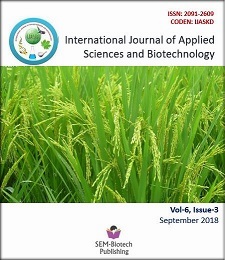Fertility Improvement by Ovsynch Protocol in Repeat Breeder Cattle of Kathmandu Valley
DOI:
https://doi.org/10.3126/ijasbt.v6i3.21183Keywords:
Repeat breeders, Ovsynch protocol, GnRH, PGF2α, Biopryn test, Fixed time AIAbstract
Repeat breeders cause substantial loss in dairy herds mainly affecting the reproductive efficiency and economy of milk production in cattle and buffaloes. A study was conducted in cattle farms of various farmers of three districts of Central Region of Nepal; Kathmandu, Bhaktapur and Lalitpur during March-August 2016. A total of 20 repeat breeder cows were selected for the trial. Repeat breeder cows were identified based on the history of at least three repeated breeding at an interval of around three weeks. We applied Ovsynch protocol where two reproductive hormones; Gonadotropin Releasing Hormone (GnRH) and Prostaglandin (PGF2α) were injected. Pregnancy was initially diagnosed by Biopryn Test kit using serum samples. Rectal examination confirmed pregnancy after 2 months of artificial insemination (AI). 16 cows expressed clear estrus signs during fixed time AI. 5 (83.3%) out of 6 cows with cystic ovary expressed estrus at the time of fixed time AI. 4 (66.7%) of these cows became pregnant.
Int. J. Appl. Sci. Biotechnol. Vol 6(3): 261-264




